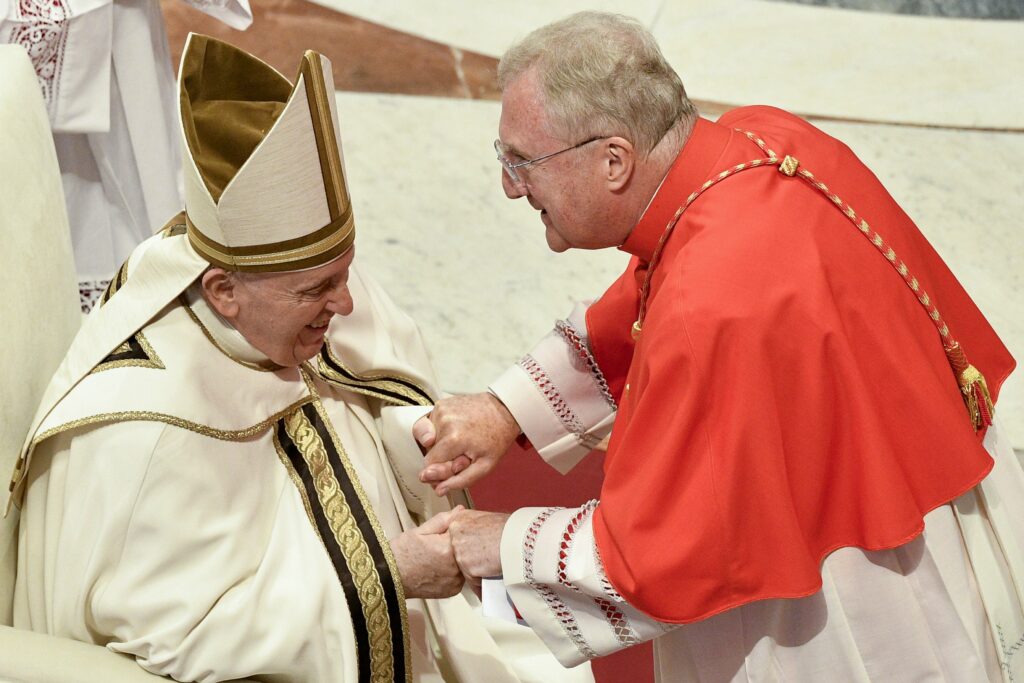
Two controversial articles have triggered a passionate response from tradservative Catholics in recent days, one eliciting a chorus of boos, the other, wild applause.
The latter, published by First Things, comes from Bishop Thomas Paprokci and is titled, “Imagining a Heretical Cardinal.” We will examine it in a future post.
Here, we will take a closer look at the former.
On February 25, International La Croix published a Letter from Rome by Robert Mickens titled, “Pope begins phasing out the Old Mass, just as Vatican II intended.”
I’d be willing to wager that a majority of those jeering in response to this article are reacting to the headline alone, i.e., they’ve likely never even read the text. This is an especially safe bet given the fact that La Croix requires registration in order to read a limited number of free articles as an inducement toward a paid subscription.
No worries. I’ve taken the bullet for you. You’re welcome.
Now, this is not to say that the rotten tomatoes being hurled at the La Croix headline are undeserved. The notion that Vatican II intended to phase out the traditional Roman Rite is pure nonsense that finds no support whatsoever in the conciliar text.
This does not mean, however, that Mickens raises no legitimate points and draws no valid conclusions. In fact, the very subtitle to the article begins the process of setting the record straight. It reads:
Francis has further angered Catholics devoted to preserving the Tridentine Mass that the bishops at the Vatican Council II explicitly wanted reformed.
Did the Council intend, or even remotely envision, a “phasing out” of the so-called Traditional Latin Mass over time? Absolutely not. Is it true, however, that the bishops explicitly wanted it reformed? You bet.
The Council emphatically states, as if the reform is a matter most urgent, “The liturgical books are to be revised as soon as possible” (cf SC 25).
As for how the revision was to take place, the Council set forth certain “principles and norms which can and should be applied to the Roman rite” (cf SC 3).
Get that? Can and should…
This is a critically important point, especially for those tradservatives who insist that Vatican II and the liturgy that emerged thereafter are Catholic.
The Novus Ordo doesn’t reflect what the Council actually said!
This is the number one go-to argument being put forth by tradservative TLM defenders, as if an ecumenical council has the authority to dictate terms to the Roman Pontiff as to the revision and regulation of the sacred liturgy. The conciliar bishops don’t even dare to assume as much for themselves; they simply laid out principles and norms that, in their estimation, could and should be applied.
Ultimately, as ought to be obvious to any and all who call themselves Catholic, the buck stops with the pope with regard to the result of any liturgical reform.
What’s that? You don’t care for the Novus Ordo?
That’s terrific, neither do I, but let’s be clear, you have no recourse whatsoever to the Council. None. Your argument is with Paul VI and every putative pope – including a bogus “saint” – that sat atop the conciliar counterfeit church since.
That said, integrity demands honesty concerning what the Council did, and did not, intend:
The bishops at Vatican II never even hint that the 1962 missal shall remain in use untouched alongside the missal reformed, not even for one day. They plainly envisioned just one Roman Rite following the revision of the liturgical books.
That rite is here, folks. It’s the so-called Mass of Paul VI. Yes, you can cry if you want to, but if the conciliar popes are popes, including Bergoglio, it’s not your party.
Returning now to the La Croix article, Mickens states:
That text [Traditionis Cojones] reversed Summorum Pontificum, a “motu proprio” from 2007 in which Benedict XVI invented the novel idea that there could actually be “two forms of the one Roman Rite” — one called extraordinary (pre-Vatican II) and the other ordinary (post-Vatican II). This theo-linguistical sleight of hand basically allowed for the perpetuation of a rite that had been completely re-ordered and reformed.
Mickens is absolutely correct about Summorum Pontificum having invented a novel idea. The harm inflicted by Benedict’s multi-form fallacy is inestimable.
Moving forward, Mickens, as a son of the Council is wont to do, plainly contradicts himself.
In successive paragraphs, he dismisses out of hand the claim that Bergoglio is “stomping on the rightful authority that local bishops have to regulate the liturgy,” as if no such authority exists, only to immediately accuse BXVI of taking “such authority away from the bishops when he issued Summorum Pontificum.”
Despite this confusion, Mickens ultimately gets it right when he concludes:
Thus, there is only one rite. Anything that deviates from that — which is what the Tridentine Mass does — is an exception and that is why it must be approved by the Apostolic See.
To be perfectly clear: As for me, I disagree with the premise that Vatican II is a valid ecumenical council of the Holy Roman Catholic Church. I do not accept the notion that the Novus Ordo Missae is a valid Catholic rite and, furthermore, I vehemently reject the impious suggestion that Jorge Bergoglio is the Vicar of Christ. In fact, it is clear to me that the society over which he reigns as head is a counterfeit church.
If, however, you are a tradservative who is determined to accept the legitimacy of the Council, the Novus Ordo (albeit begrudgingly), the counterfeit church, and Bergoglio’s claim to the papacy, the arguments put forth by Robert Mickens are unassailable.
Face it tradservative TLM warrior: You have no Catholic leg to stand on. Not even one.
If you benefit from our work, please help us continue.
